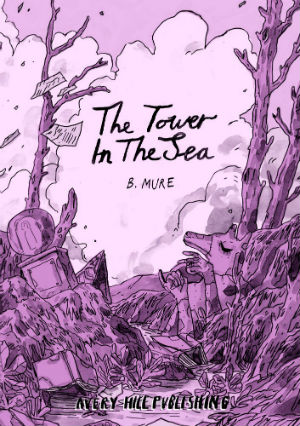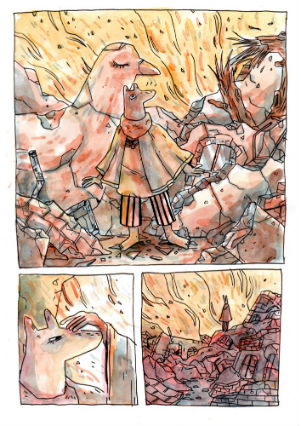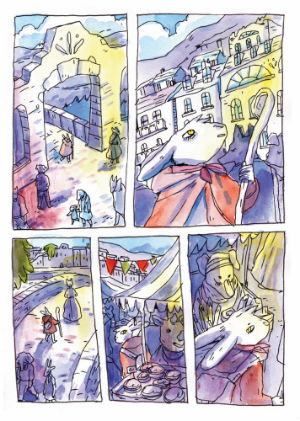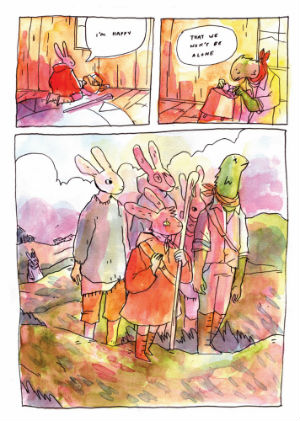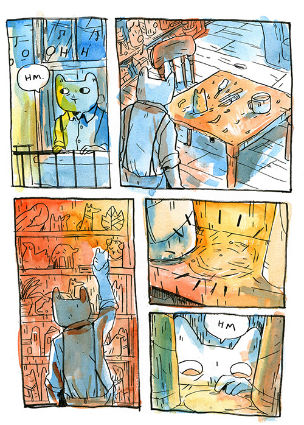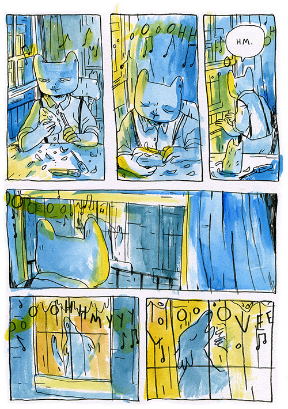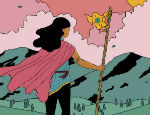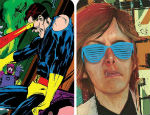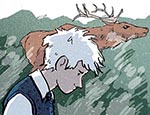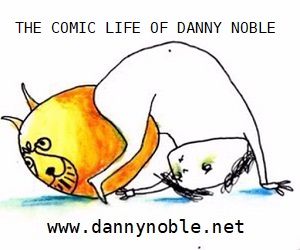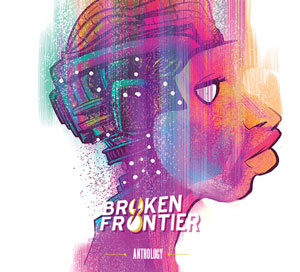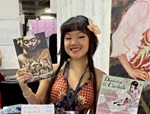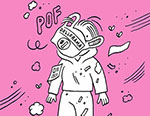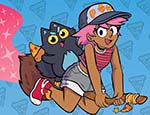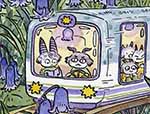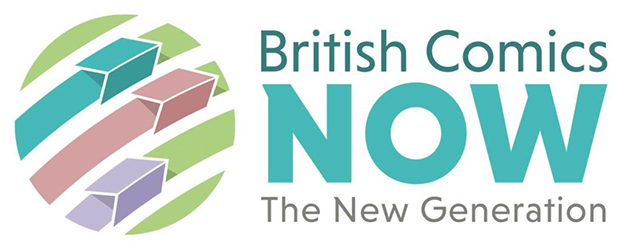
BRITISH COMICS NOW! As mentioned at Broken Frontier earlier this year six British/UK-based comic creators will be attending this year’s Toronto Comic Art Festival (TCAF) as part of the British Comics Now initiative from the Lakes International Comic Art Festival (LICAF), and funded by Arts Council England, The Adlard Foundation and The British Council. To mark this at BF we’ll be looking to shine some spotlights on the practice of the six artists involved. In our penultimate chat we speak with B. Mure, the artist behind the much acclaimed Ismyre series of fantasy graphic novels from Avery Hill Publishing. For the first time in 7(!) years we caught up with B. to ask him about the evolution of the series, socio-political allegory and the Ismyre finale…
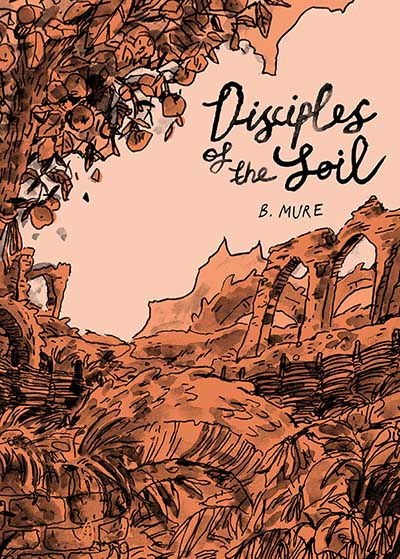
ANDY OLIVER: When last we interviewed you way back in 2017 Ismyre was a one-shot graphic novel rather than the series of books it has become. If you had to sell the world of Ismyre to a new reader in just one paragraph how would you describe it?
B. MURE: Oh boy! I have never nailed this down. I guess Ismyre is this sort of just post-industrial fantasy world and the stories within it focus on the environment, capitalism and with that the everyday lives and relationships of its inhabitants. It tries to imagine what resistance to this very bureaucratic state looks like, what it is to try and exist in that world and is also a little silly.
AO: What can we expect from Disciples of the Soil, your latest Ismyre book from Avery Hill?
MURE: You get to revisit some old characters from the first book which was fun for me to do. There are nuns and trains and unions and I think it is quite bittersweet.
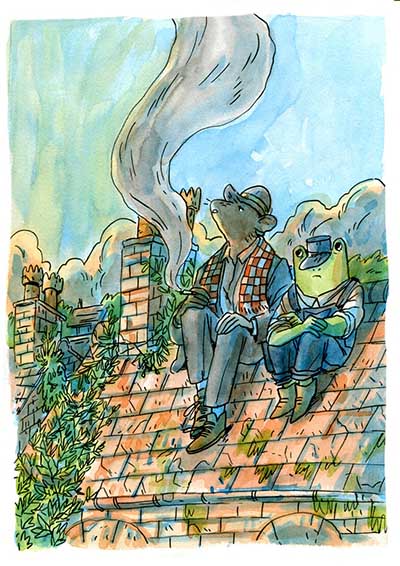
AO: As mentioned. the books have touched on overarching themes like capitalism and the environment, and also more personal explorations of the human condition. In terms of social commentary, what are the advantages in using allegorical narrative to convey these themes? And do you have any thoughts on why comics as a form connects with readers so intimately in communicating these ideas?
MURE: I’m not actually sure about the advantages of it. I think a poorly done allegorical narrative can be at best ham-fisted and at worst offensive (thinking of many examples of fantasy elf racism). Sometimes it comes off to me as a fear of or inability to address these things in the real world, or a way to avoid learning?
I’m definitely not exempt from a bad allegory. As is often the way, I never intended them to be (I really wanted to make a story involving industrial things and a train, following those ecological themes in Ismyre and then realised you could read it as a HS2 and went OH GOD but I liked it enough by then that I carried on regardless).
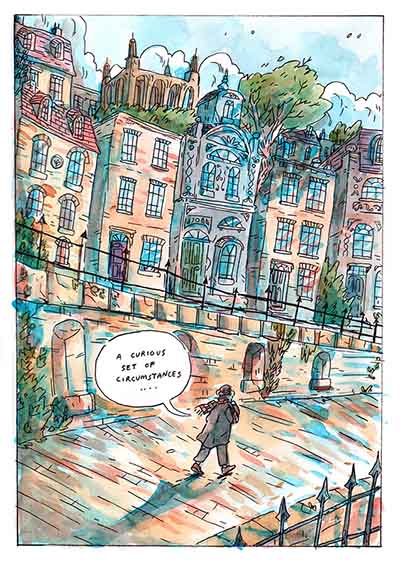
It felt hard for me to make a story not involving those things given how constant it is in my mind and reality, so I guess it is slightly cathartic and if there is an advantage it’s encouraging people to wrangle with these things (and the complicated grief, guilt, anger and other emotions it inspires).
I think it might just be that words and pictures together have just always been a way to connect with others, there is something very intimate about perceiving a subtle emotion in a face or feeling in a scene (drawn or otherwise) that might be indeterminate.
AO: The world-building element of the Ismyre series is one its most notable storytelling features. Did you have a long-term masterplan for the series when you began or is it case of things developing organically along the way?
MURE: Definitely not a masterplan, but I did have ideas of themes and elements of the world I wanted to explore. I like to sort of let things develop along the way, but sometimes a lack of planning is to my detriment so I am trying to strike that balance better now.
AO: The finale of the series has been announced. But how final is final? Could you see yourself taking another trip to the world of Ismyre further down the road?
MURE: Definitely! I think there are still a lot of interesting elements in it for me and questions I like asking myself about the world of Ismyre that I can keep delving into it again and again. It would be really fun to do a historical Ismyre story.
AO: Can you give us some insights into your creative process and the mediums you work in?
MURE: Yes! Like a lot of people who write their own comics, I never write myself a full script. I make a premise and then note out the major points in bullets. I do my thumbnails in a kind of non-linear way, mapping out individual scenes I have in my brain and then working out what needs connecting. Lately I’ve started doing my pencils digitally, because I can move things around and blow stuff up as I need.
From inking I sort of go backwards and forwards, so I’ll ink portions I feel I have down but might have to go back and figure out some story stuff in detail. I’m sure it’s not the most efficient way of working but I feel like making every comic is an exercise in how to make the next one better. Also it is the best way of making sure I keep moving and don’t get too worried about getting stuck in places.
Oh, and colouring! I print my pencils and ink them on a light box I made in resistant materials when I was 14 (the pens I use are zig mangaka flexibles which are my favourite). Then I watercolour straight on top.
When I colour a comic digitally I can really struggle with how to do it and rethink it a lot, whereas with the watercolour I just have to commit. I like that about it.
AO: What excites you the most about being part of the British Comics Now delegation to TCAF?
MURE: Oh! I’m very excited to connect with the other artists going and mostly I’m super stoked to see a bunch of artists whose work I love and who I don’t necessarily get to see at UK comics conventions!
AO: And, finally, what else are you currently working on? Any teases you can give us for upcoming creative endeavours?
MURE: I am finishing up a booklet about Climate Reparations with Tipping Point over the next few months and getting ready to work on the next book!
But speaking of allegories, I have some ideas for a gothic comic about a hidden cathedral I’ve been rolling around in my brain that I would like to make.
Lately I’ve been doing a little teaching and there is nothing like it to force you to reevaluate yourself and the way you work. Mainly I want to figure out how to make work that is useful to others, connects with others and does not exist in a vacuum as just a pretty thing.
Interview by Andy Oliver





